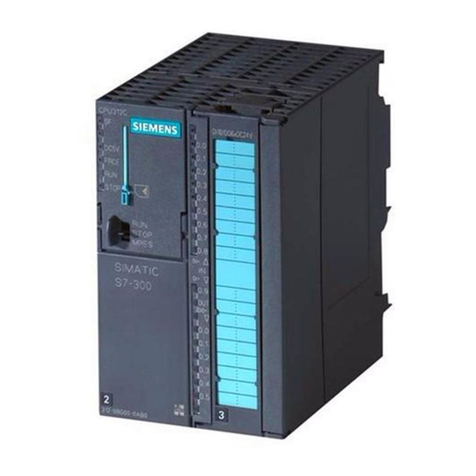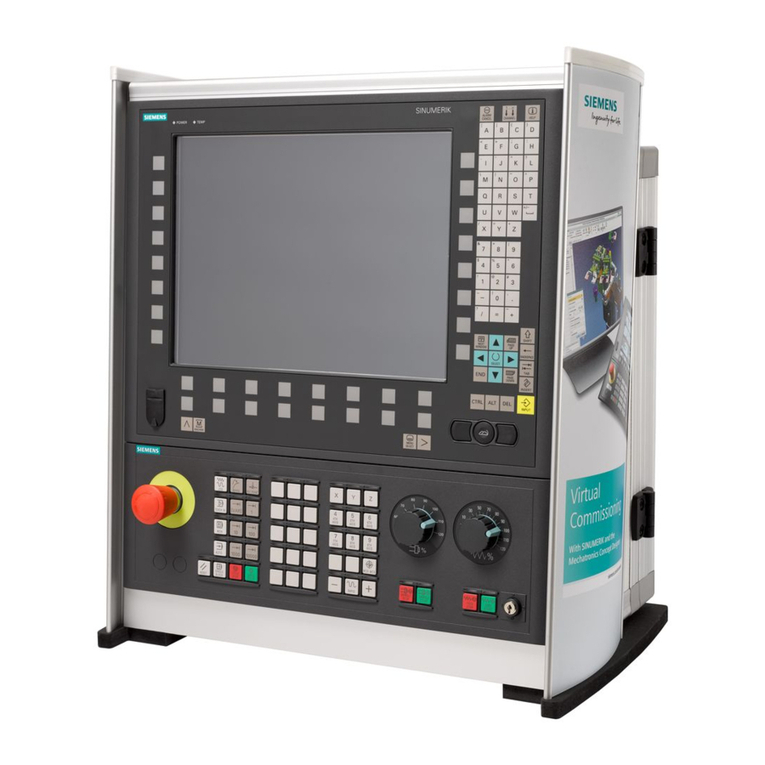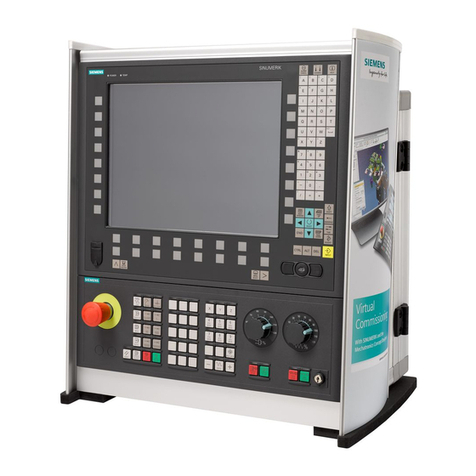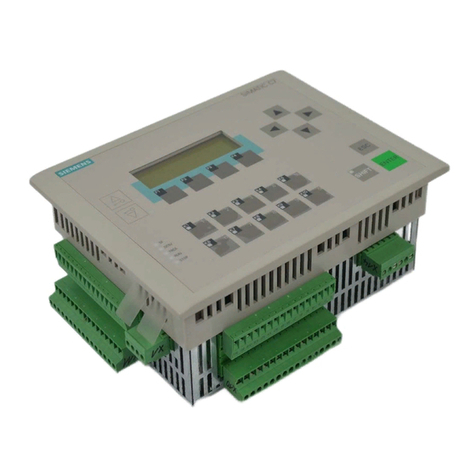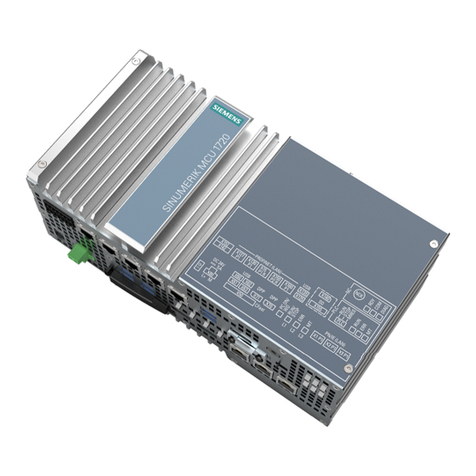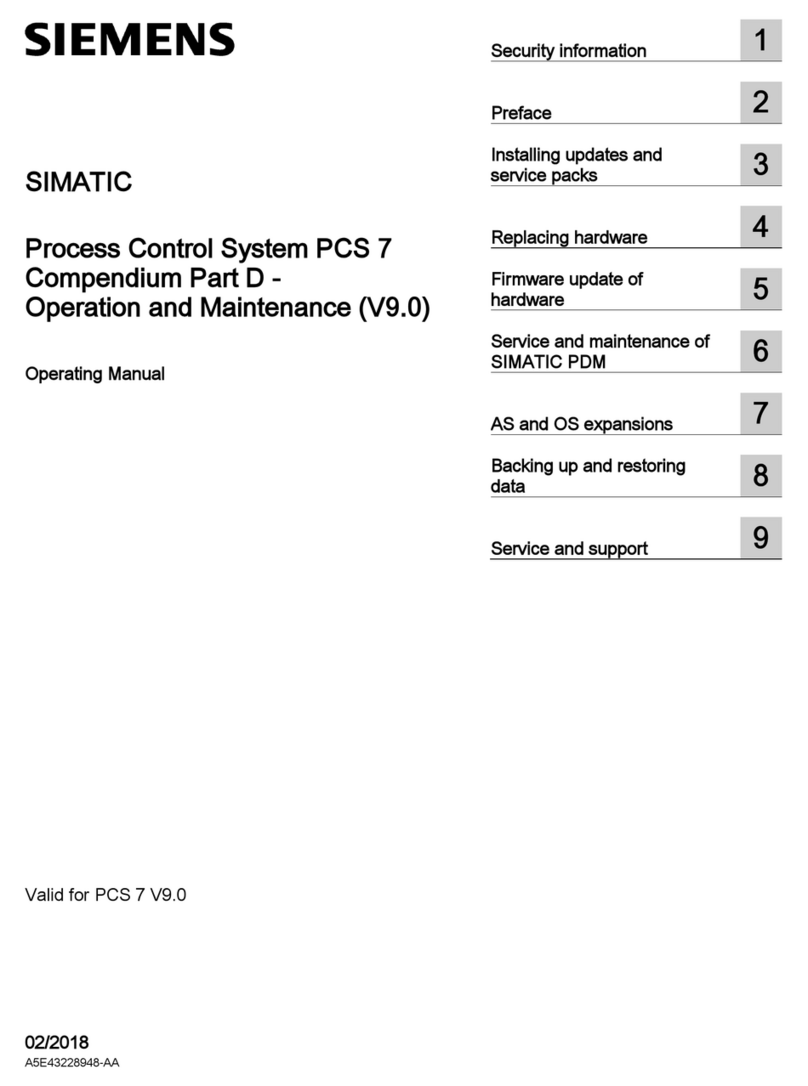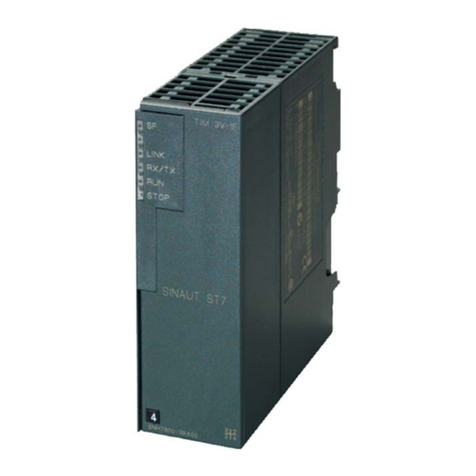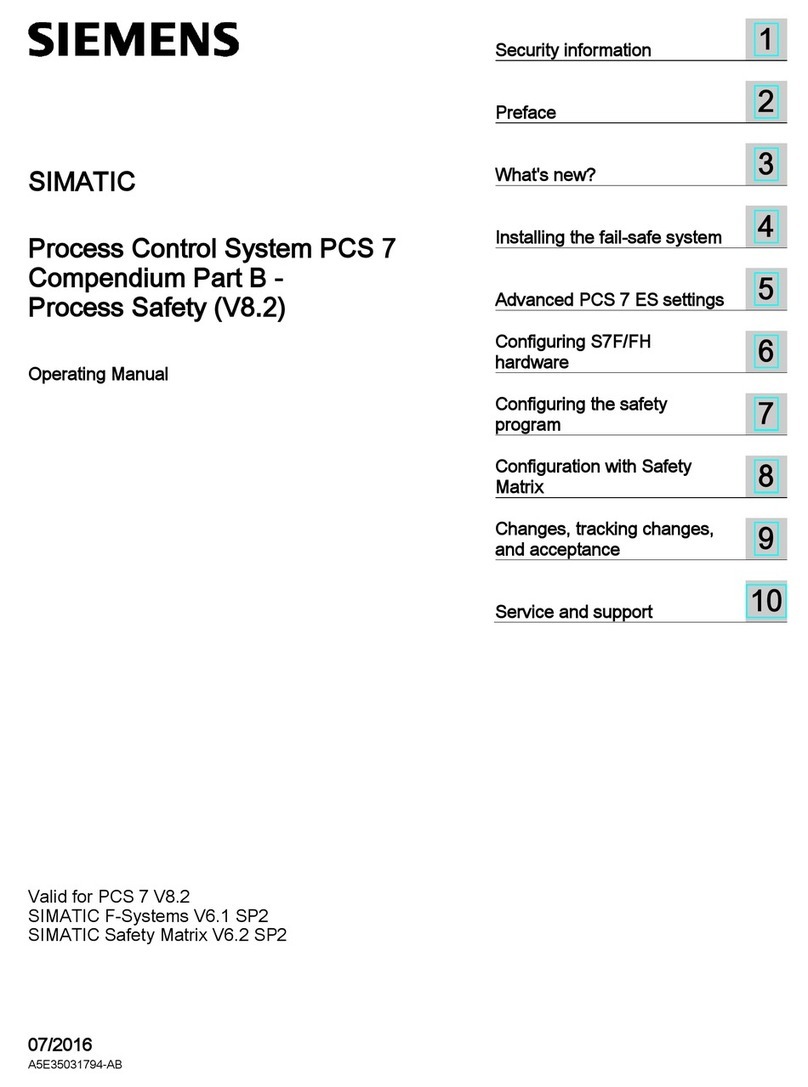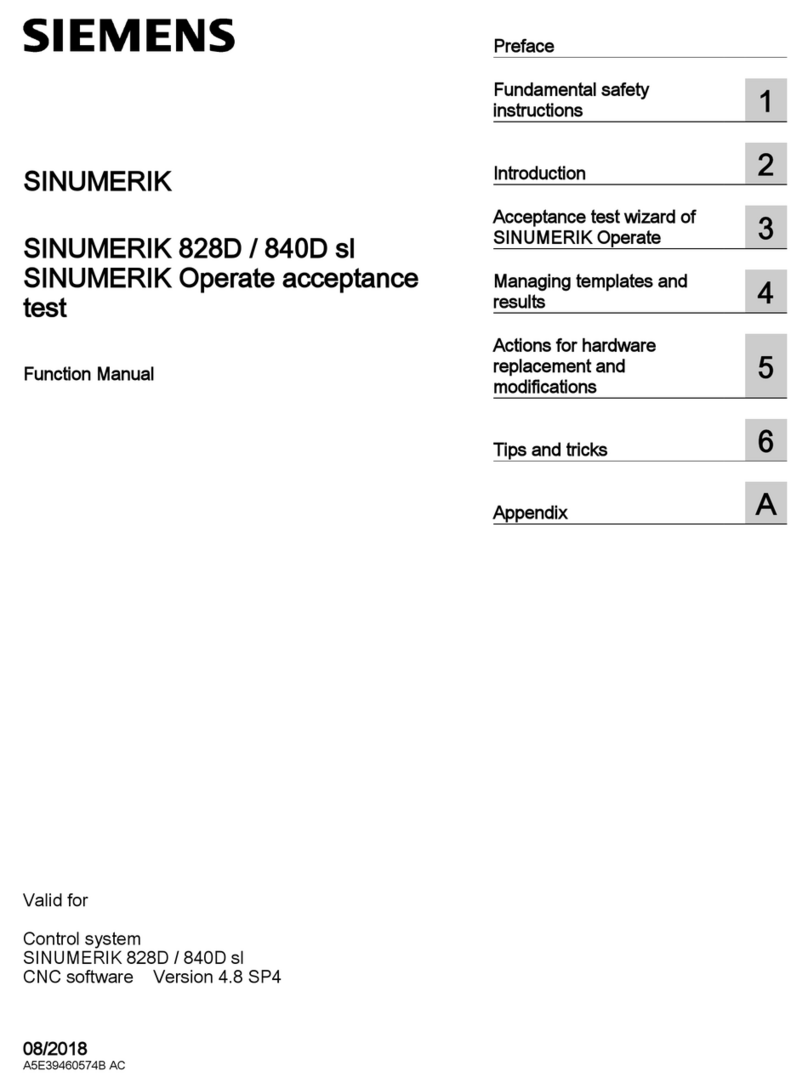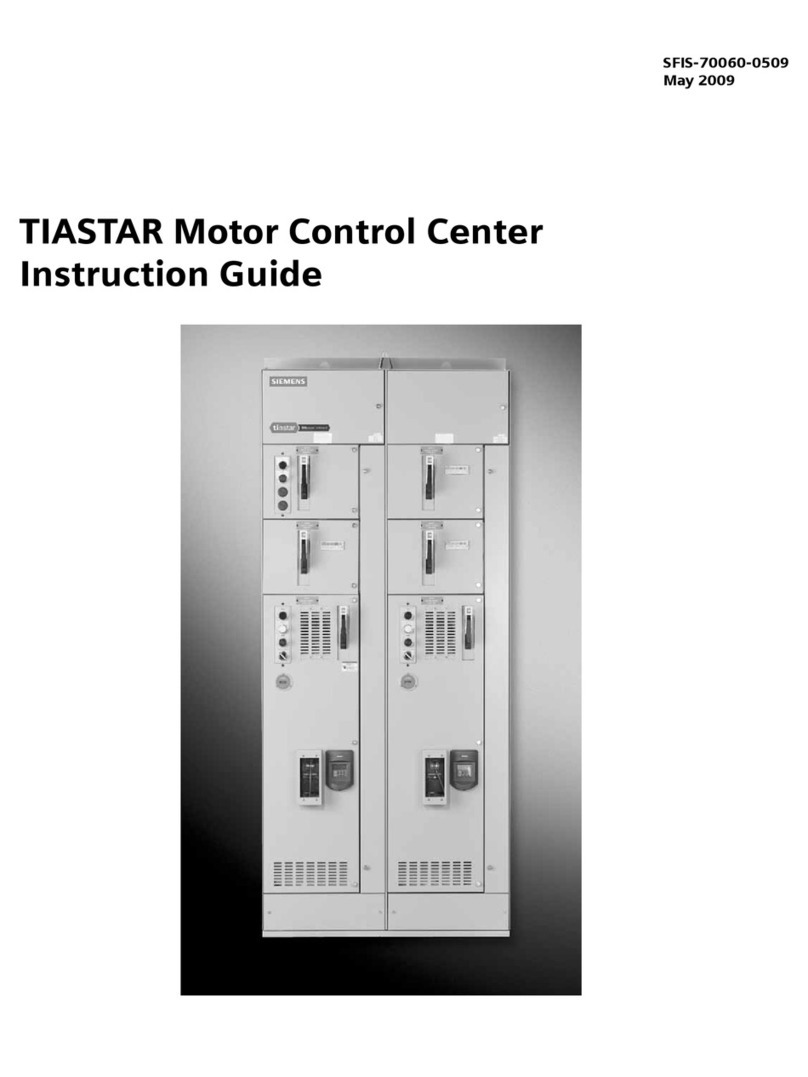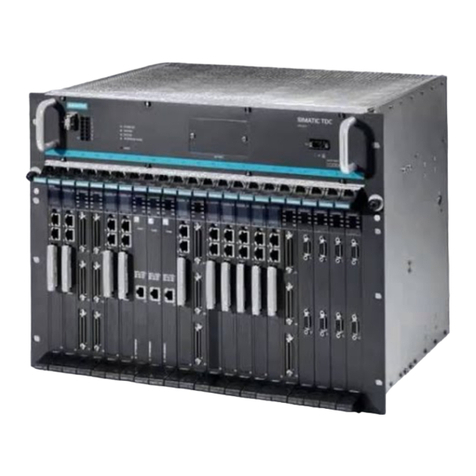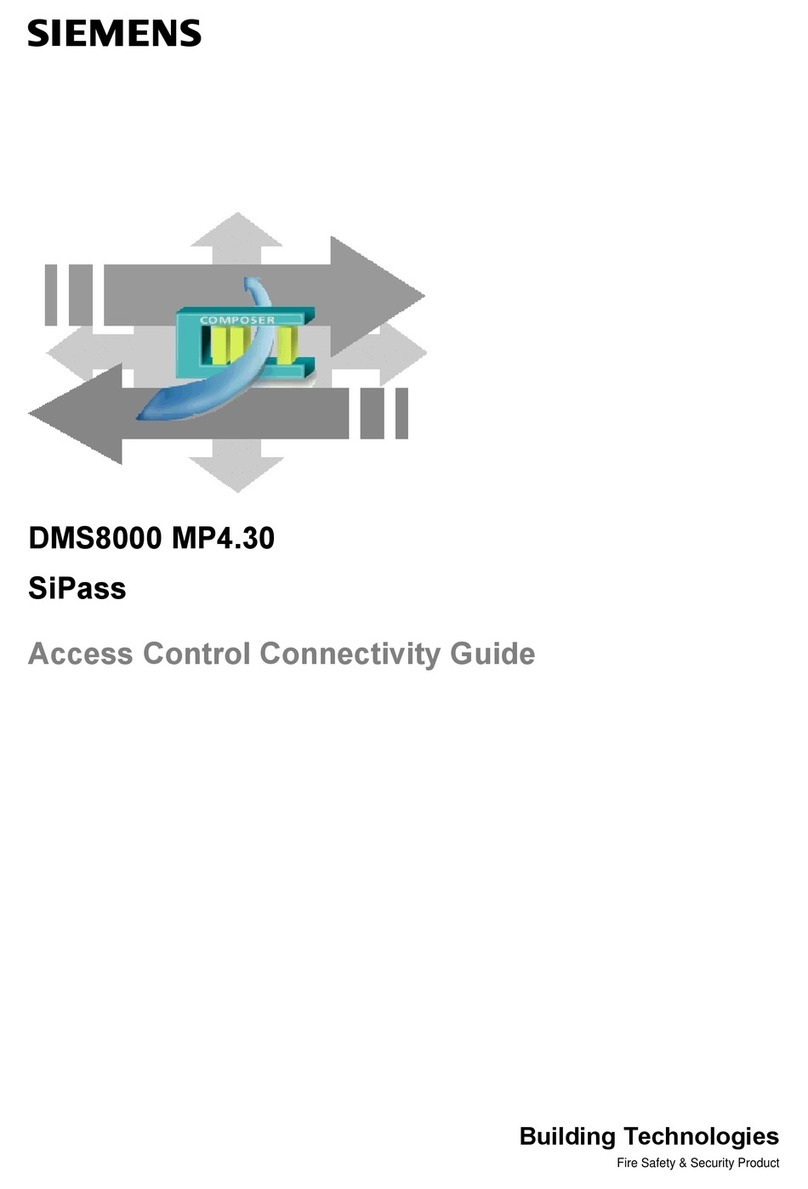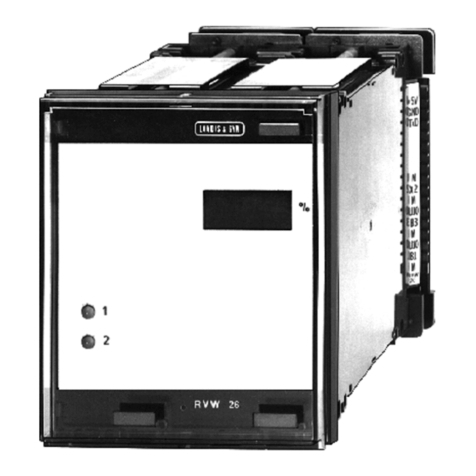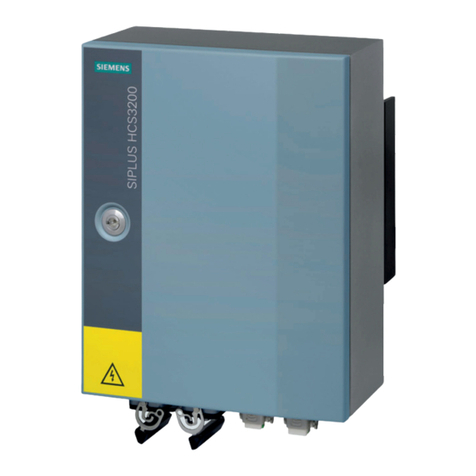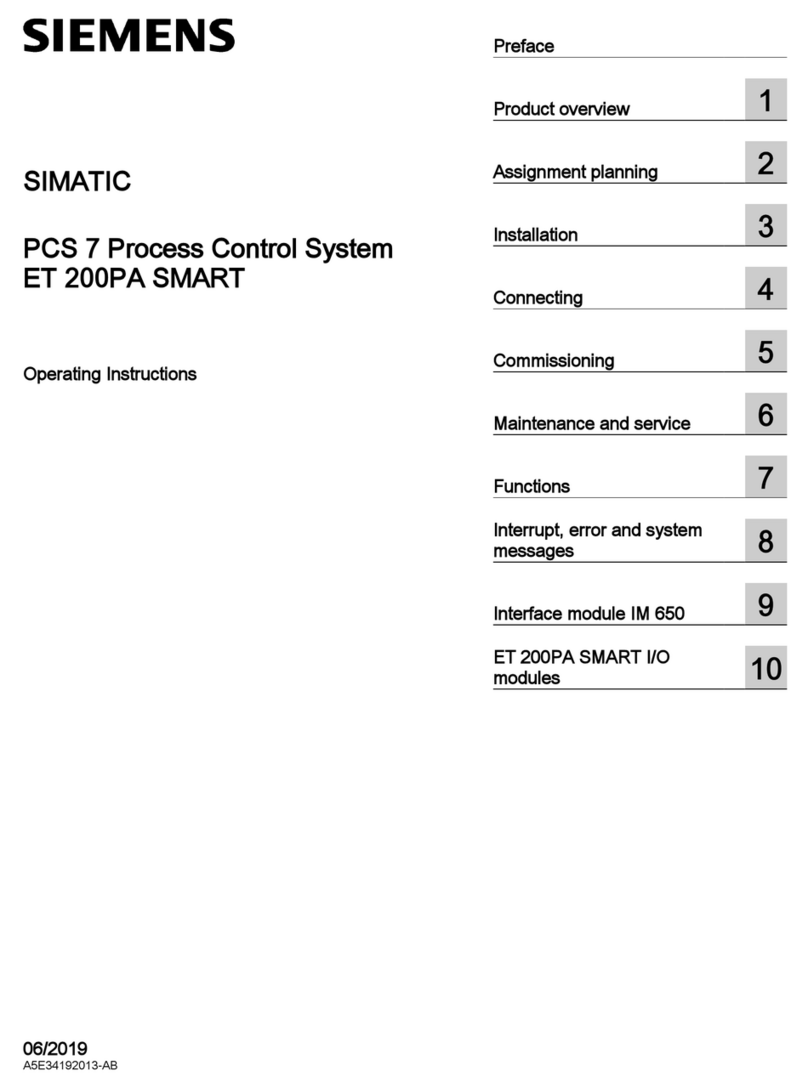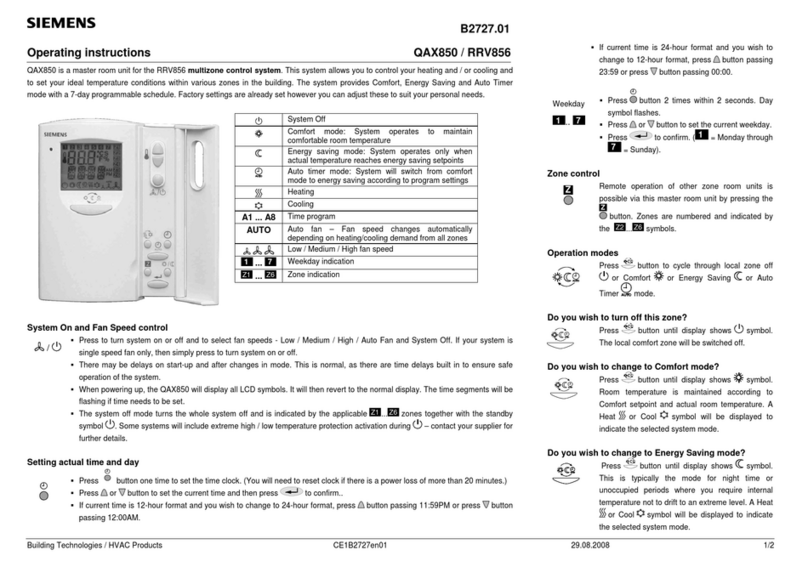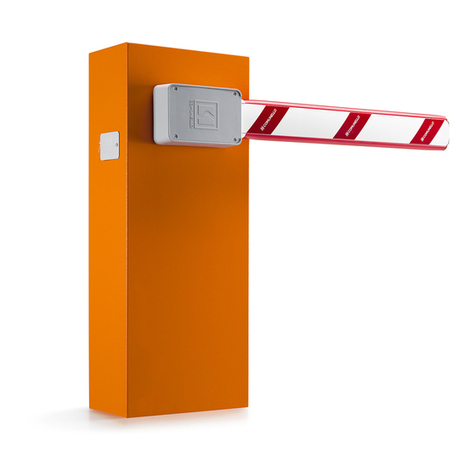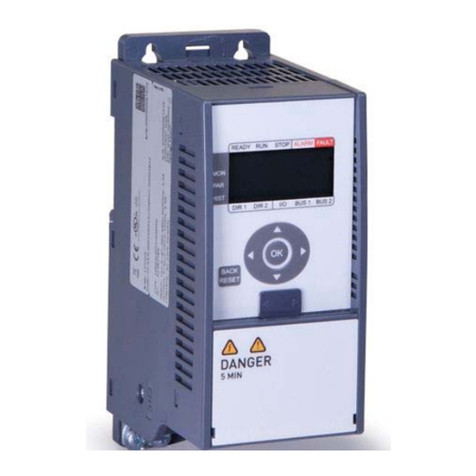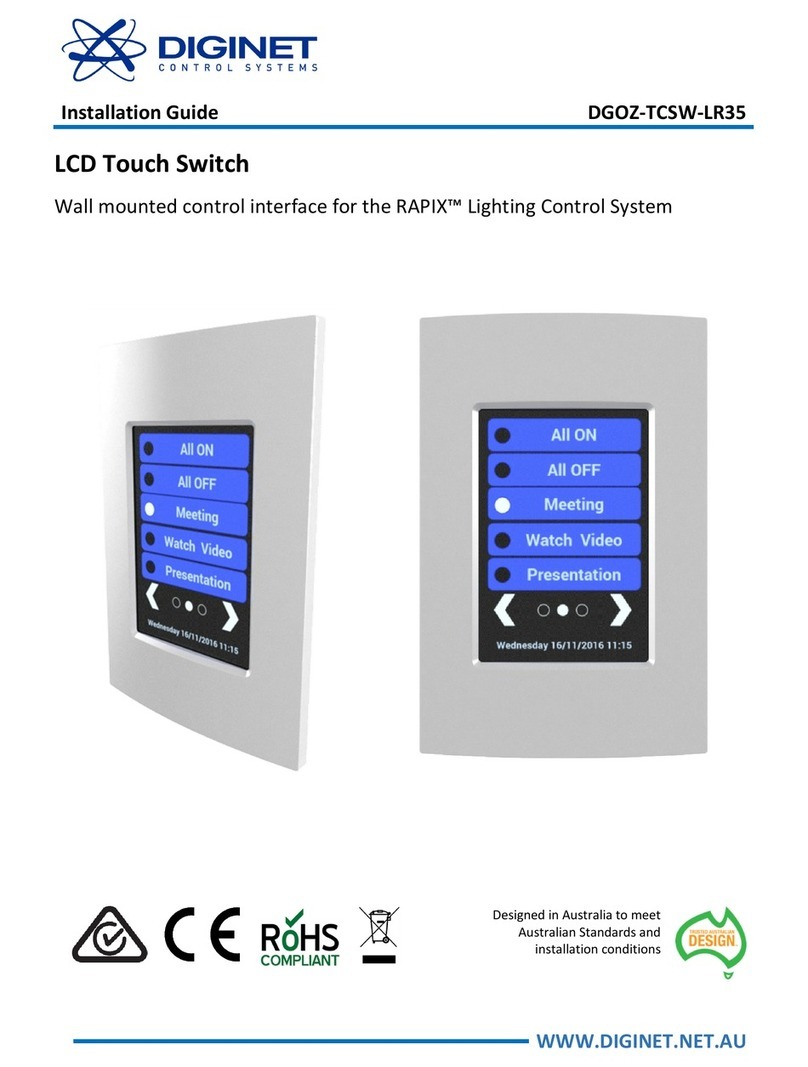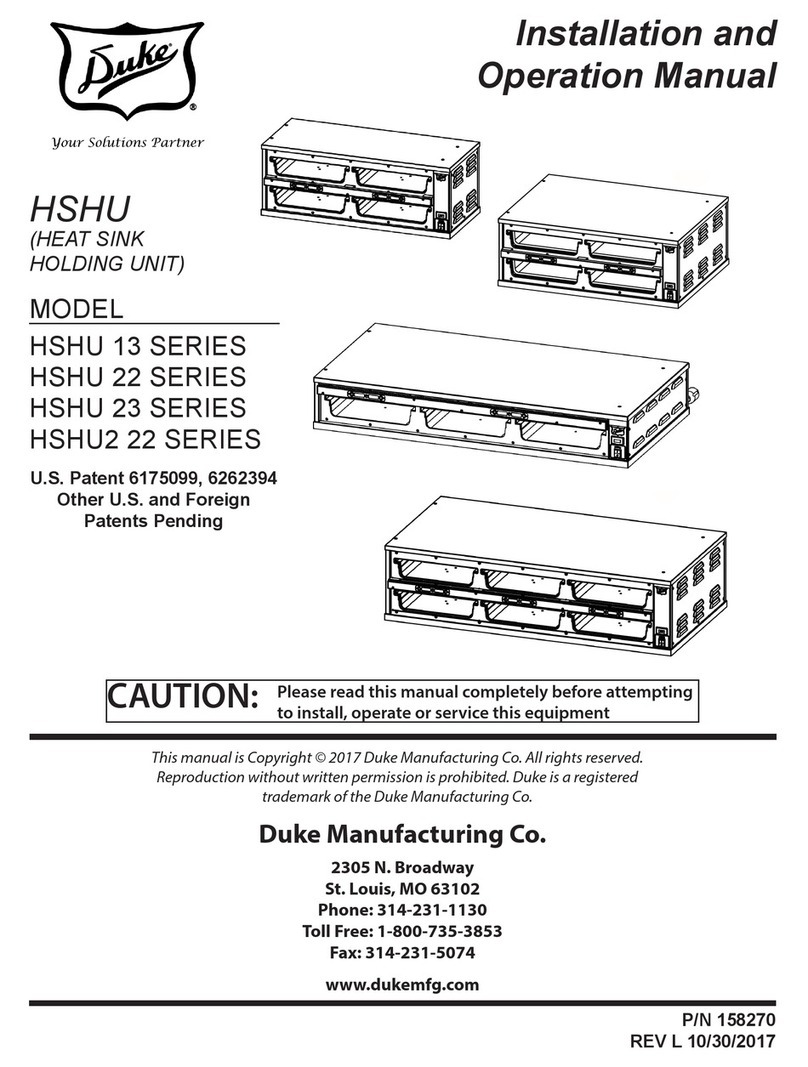
Table of Contents
E87010-A0401-T002-A5-MCC
tiastarTM Motor Control Center
Page 2 of 12
Siemens Industry, Inc. 5300 Triangle Parkway, Norcross, GA 30092 A5E33045207A
1. Receiving 3
2. Removing Existing Unit 4
3. Installing Unit 5
4. Handle Adjustment 6
5. Outgoing Power and Control Wiring 7
6. Pre-operation Checks 7
7. High Density Units 8
8. 600A Bolted Clamp Assembly 10
Hazardous voltage.
Will cause death or serious injury.
Always de-energize and ground the equipment
before maintenance. Read and understand this
manual before installing, operating or maintaining
the equipment. Maintenance should be performed
only by qualified personnel. The use of unautho-
rized parts in the repair of the equipment or tam-
pering by unqualified personnel may result in dan-
gerous conditions which may cause death or seri-
ous injury, or equipment or property damage.
Follow all safety instructions contained herein.
THIS EQUIPMENT CONTAINS HAZARDOUS VOLTAGES. DEATH, SERIOUS PERSONAL INJURY, OR PROPERTY DAMAGE CAN RESULT IF
SAFETY INSTRUCTIONS ARE NOT FOLLOWED. ONLY QUALIFIED PERSONNEL SHOULD WORK ON OR AROUND THIS EQUIPMENT
AFTER BECOMING THOROUGHLY FAMILIAR WITH ALL WARNINGS, SAFETY NOTICES, AND MAINTENANCE PROCEDURES CONTAINED
HEREIN.
THE SUCCESSFUL AND SAFE OPERATION OF THIS EQUIPMENT IS DEPENDENT UPON PROPER HANDLING, INSTALLATION, OPERATION
AND MAINTENANCE.
SIGNAL WORDS
The signal words “DANGER”, “WARNING” and “CAUTION”
used in this manual indicate the degree of hazard that may be
encountered by the user. These words are defined as:
DANGER - For the purpose of this manual and product labels,
DANGER indicates an imminently hazardous situation which,
if not avoided will result in death or serious injury.
WARNING - For the purpose of this manual and product
labels, WARNING indicates a potentially hazardous situation
which, if not avoided, could result in death or serious injury.
CAUTION - For the purpose of this manual and product
labels, CAUTION indicates a potentially hazardous situation
which, if not avoided, may result in minor or moderate injury.
QUALIFIED PERSON
For the purposes of this manual and product labels, a quali-
fied person is one who is familiar with the installation, con-
struction, operation or maintenance of the equipment and the
hazards involved. In addition this person has the following
qualifications:
(a) is trained and authorized to energize, de-energize,
clear, ground and tag circuits and equipment in
accordance with established safety practices.
(b) is trained in the proper care and use of protective
equipment such as rubber gloves, hard hat, safety
glasses or face shields, flash clothing, etc., in
accordance with established safety practices.
(c) is trained in rendering first aid.
IMPORTANT
These instructions do not purport to cover all details or variations in equipment, nor to provide for every possible contingency to be met in connection
with installation, operation or maintenance. Should further information be desired or should particular problems arise which are not covered suffi-
ciently for the purchaser’s purposes, the matter should be referred to the local Siemens sales office. The contents of this instruction manual shall not
become part of or modify any prior or existing agreement, commitment or relationship. The sales contract contains the entire obligation of Siemens.
The warranty contained in the contract between the parties is the sole warranty of Siemens. Any statements contained herein do not create new
warranties or modify the existing warranty.
9. Wiring Fixed Mounted Units 11
10.Recommended Tightening Torques
11.Additional Resources
12
12
